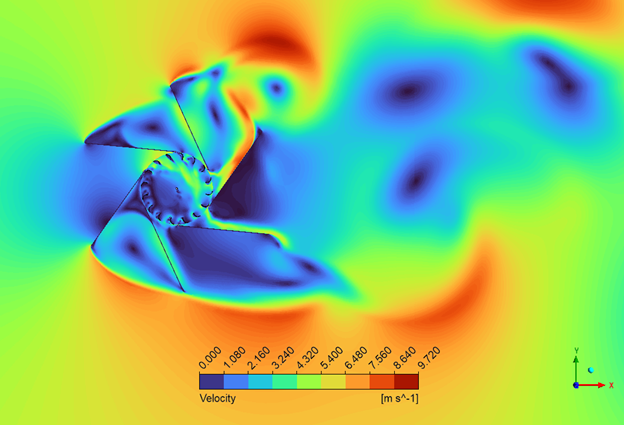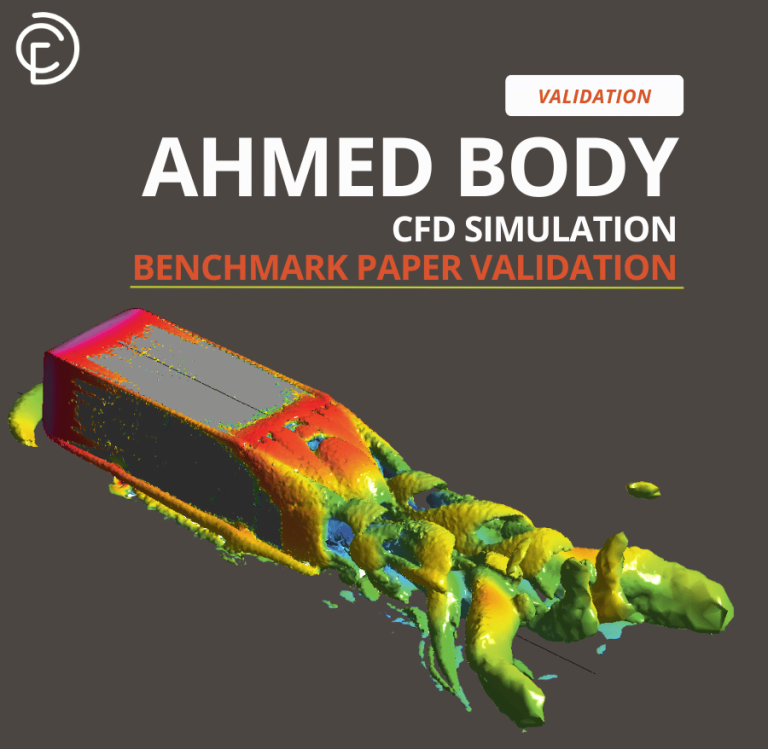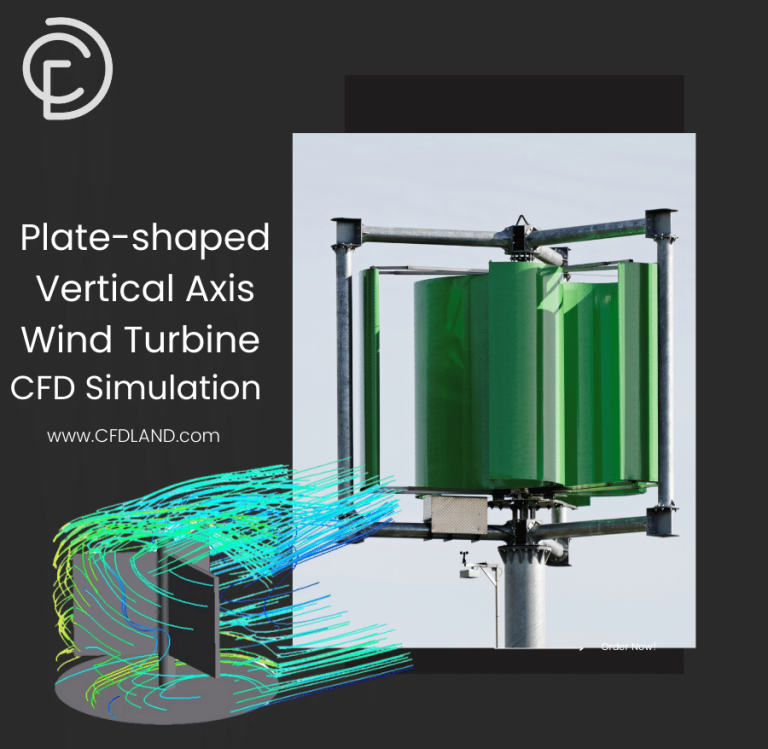Vertical Axis Wind Turbine With Guide Vane CFD | A Fluent Simulation Tutorial
Vertical Axis Wind Turbine With Guide Vane CFD | A Fluent Simulation Tutorial
- Upon ordering this product, you will be provided with a geometry file, a mesh file, and an in-depth Training Video that offers a step-by-step training on the simulation process.
- For any more inquiries regarding the product, please do not hesitate to reach out to us at info@CFDLAND.com or through our online support assistant.
€240 Original price was: €240.€135Current price is: €135.
Introduction to the Omni-direction Vertical Axis Wind Turbine
A standard Vertical Axis Wind Turbine (VAWT) can catch wind from any direction. However, engineers are always looking for ways to make them more powerful. One very clever idea is to add stationary guide vanes around the moving turbine. These vanes act like a funnel, catching the wind and directing it onto the turbine’s blades with more force. This new design is called an Omni-direction wind turbine. Because of this improvement, the turbine can generate more power, even in the changing wind conditions found in cities.
In this project, we perform a detailed Vertical Axis Wind Turbine With Guide Vane CFD simulation. Our goal is to see exactly how these guide vanes change the airflow and improve the turbine’s performance. Our work is based on the methods in the reference paper “The design, simulation and testing of an urban vertical axis wind turbine with the omni-direction-guide-vane” by Chong, W. T., et al. [1].
- Reference [1]: Chong, W. T., et al. “The design, simulation and testing of an urban vertical axis wind turbine with the omni-direction-guide-vane.” Applied Energy112 (2013): 601-609.
![The overall design of the innovative Omni-direction-guide-vane system from the reference paper [1].](https://cfdland.com/wp-content/uploads/2024/04/Picture1-5.png)
Figure 1: The overall design of the innovative Omni-direction-guide-vane system from the reference paper [1].
Simulation Process | CFD Modeling of Turbine Rotation in Fluent
The first step in our Omni-direction wind turbine Fluent simulation was building the 3D model. Because the geometry with all the vanes and blades was complex, we used ANSYS SpaceClaim to create it. To make the meshing process easier, the model was divided into different zones. A high-quality mesh with 1,170,216 elements was then created, with a very fine mesh placed around the rotating turbine blades to capture the flow details accurately.
Next, the physics were set up in ANSYS Fluent. The key to this simulation is correctly modeling the rotation. For this, we used the Sliding Mesh technique. This feature allows the inner zone containing the turbine to rotate, while the outer zone with the guide vanes stays still. The simulation was run as transient because the forces change as the blades spin. The rotor was set to spin at a constant speed of 50 rpm. This complete setup provides a strong foundation for analyzing the Aerodynamic Performance of the VAWT.


Figure 2: The computational mesh used for the Vertical Axis Wind Turbine With Guide Vane Fluent simulation.
Post-processing |CFD Analysis of Guide Vanes on VAWT
An analysis of the simulation results clearly shows the powerful effect of the guide vanes. The velocity contour in Figure 3 reveals that the stationary vanes act like nozzles, squeezing the incoming air and creating jets of high-speed flow. We can see that the velocity in these focused jets reaches a peak of 9.72 m/s right before hitting the turbine blades. This is the most important achievement of the guide vanes: they concentrate the wind’s energy and hit the rotor with much more force than the turbine would experience on its own. This direct channeling of airflow leads to a significant increase in the torque and power produced by the turbine.
urthermore, the guide vanes have a major impact on the wake, which is the messy, slow-moving air behind the turbine. The velocity contour shows that after the air passes the rotor, its speed drops to around 2-4 m/s in the wake region. However, unlike a standard VAWT which creates a large, turbulent wake, the guide vanes help organize the flow. This results in a more structured and less chaotic wake pattern. This is a huge benefit for CFD for Urban Wind Energy because it means the turbine is extracting energy more efficiently and causing less disruption to its surroundings. This ability to increase power and control the wake is what makes the Omni-direction wind turbine CFD model such a promising technology.

We pride ourselves on presenting unique products at CFDLAND. We stand out for our scientific rigor and validity. Our products are not based on guesswork or theoretical assumptions like many others. Instead, most of our products are validated using experimental or numerical data from valued scientific journals. Even if direct validation isn’t possible, we build our models and assumptions on the latest research, typically using reference articles to approximate reality.
Yes, we’ll be here . If you have trouble loading files, having technical problems, or have any questions about how to use our products, our technical support team is here to help.
You can load geometry and mesh files, as well as case and data files, using any version of ANSYS Fluent.
€215 Original price was: €215.€165Current price is: €165.

€220 Original price was: €220.€115Current price is: €115.

€380 Original price was: €380.€185Current price is: €185.

€140 Original price was: €140.€85Current price is: €85.


















Reviews
There are no reviews yet.